Family: Tenthredinidae
Family common name: common sawflies
Subfamily: Blennocampinae
Tribe: Blennocampini
Genus: Monophadnoides Ashmead, 1898
Subgenera: none
The Tenthredinidae are the most species-rich family and are found throughout the world, in all continents but Antarctica. They are known as the “common sawflies.” They can generally be recognized by a cylindrical body and long, segmented antennaeantenna:
the sensory organ emerging from the front of the head, usually between the compound eyes and above the clypeus; includes the flagellum, scape and pedicel
 . Otherwise, they come in a variety of colors, sizes, and forms (Goulet 1992Goulet 1992:
. Otherwise, they come in a variety of colors, sizes, and forms (Goulet 1992Goulet 1992:
Goulet H. 1992. The genera and subgenera of the sawflies of Canada and Alaska: Hymenoptera. Symphyta. The insects and arachnids of Canada. Part 20. Agriculture Canada Publication.).
Sawflies in the subfamily Blennocampinae have a diverse set of life histories and habits. Many species are restricted to subtropical and tropical regions, but the genus is still fairly species-rich in North America. Blennocampinae includes many sawflies that feed on ornamental and forestry crops. This subfamily can be recognized by wing venationvenation:
the network of veins on a wing
and bidentatebidentate:
having two teeth; often used in descrbing mandibles or tarsal claws
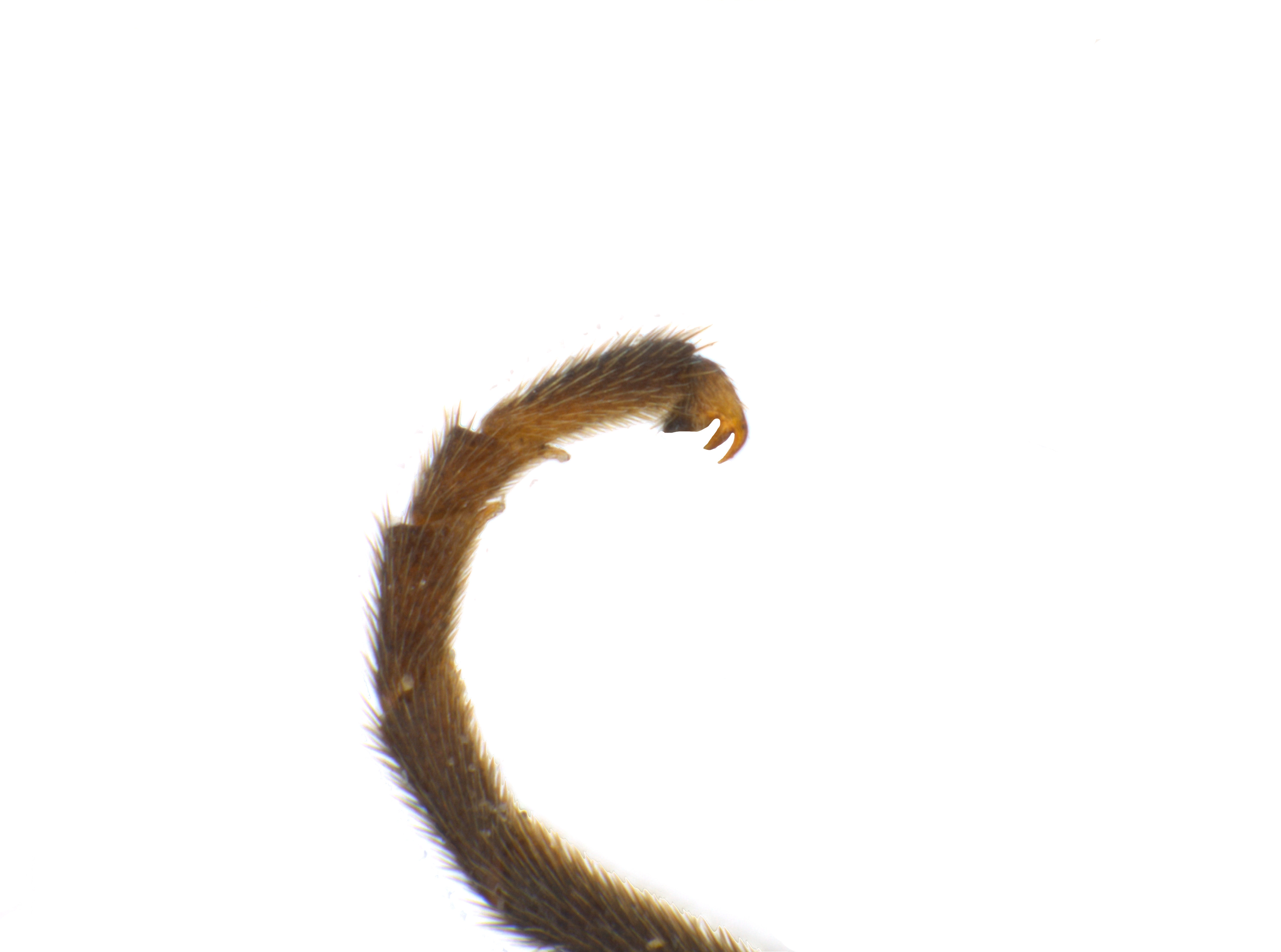 mandibles (Smith 1969dSmith 1969d:
mandibles (Smith 1969dSmith 1969d:
Smith DR. 1969d. Nearctic Sawflies. I. Blennocampinae: Adults and larvae (Hymenoptera: Tenthredinidae). Technical Bulletin, U.S. Department of Agriculture 1397: 1-176.).
Monophadnoides is monotypicmonotypic:
describes having only one representative; ex. a genus that includes only one species
in North America. Monophadnoides rubi, the raspberry sawfly, is mostly black with red and yellow markings (Vaughan and Rosenstiel 1949Vaughan and Rosenstiel 1949:
Vaughan EK and Rosenstiel RG. 1949. Diseases and insect pests of cane fruits in Oregon. Oregon State University Agricultural Experiment Station Bulletin 418., Smith 1969dSmith 1969d:
Smith DR. 1969d. Nearctic Sawflies. I. Blennocampinae: Adults and larvae (Hymenoptera: Tenthredinidae). Technical Bulletin, U.S. Department of Agriculture 1397: 1-176.).
There are 10 described extantextant:
in existence; opposite of extinct
species worldwide. One species occurs in North America (Taeger et al. 2018Taeger et al. 2018:
Taeger A, Liston AD, Prous M, Groll EK, Gehroldt T, and Blank SM. 2018. ECatSymmdash;Electronic World Catalog of Symphyta (Insecta, Hymenoptera). Program version 5.0 (19 Dec 2018), data version 40 (23 Sep 2018). Senckenberg Deutsches Entomologisches Institut (SDEI), Muuml;ncheberg. https://sdei.de/ecatsym/ Accessed: 28 Jan 2020.).
The monograph for Blennocampinae (Smith 1969dSmith 1969d:
Smith DR. 1969d. Nearctic Sawflies. I. Blennocampinae: Adults and larvae (Hymenoptera: Tenthredinidae). Technical Bulletin, U.S. Department of Agriculture 1397: 1-176.) synonymizes Monophadnoides and Claremontia. The two genera have since been separated, and the only NearcticNearctic:
describing the region of the Northern Hemisphere that includes North America south through northern Mexico
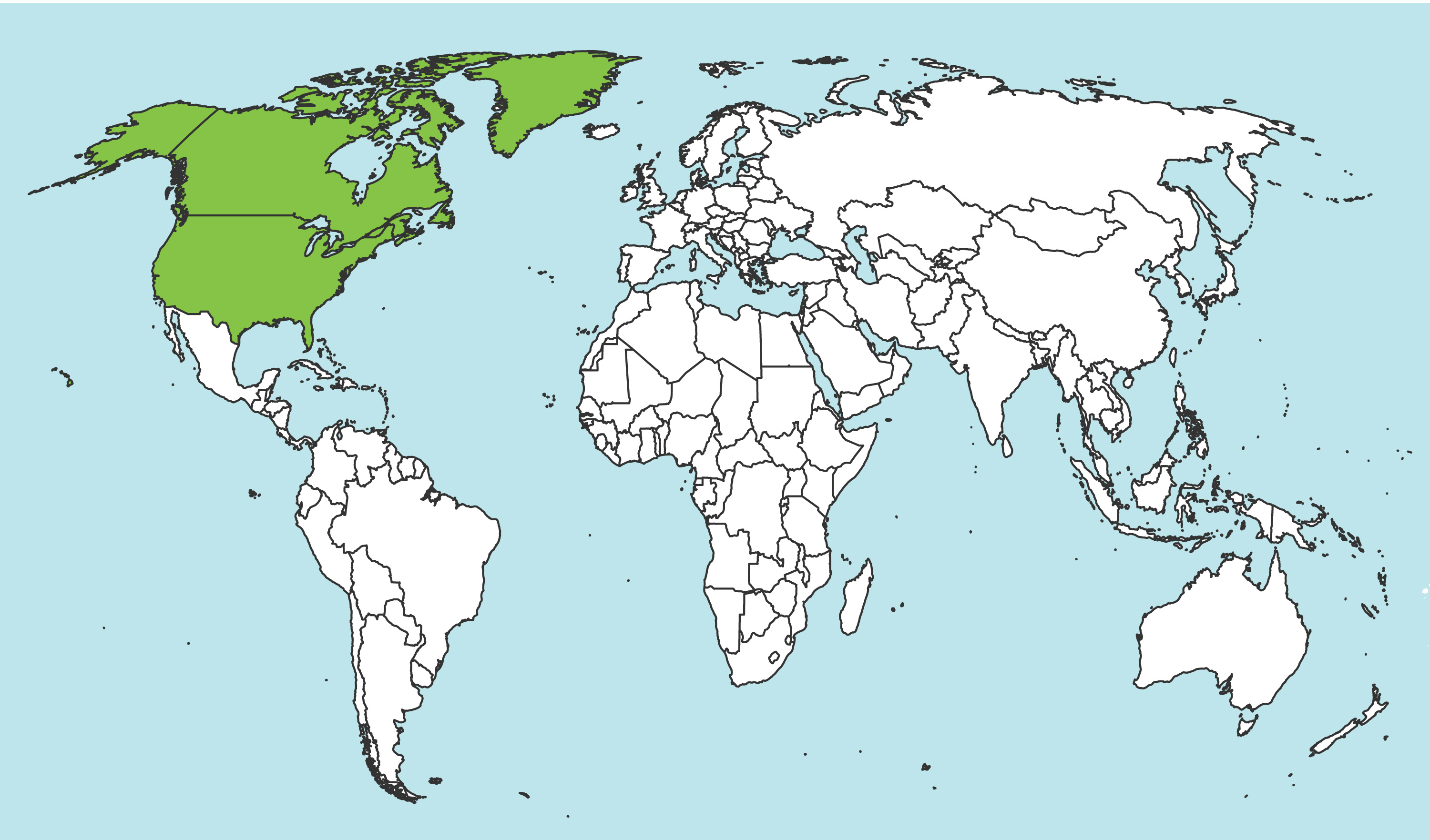 species to remain in Monophadnoides is M. rubi (Taeger et al. 2010Taeger et al. 2010:
species to remain in Monophadnoides is M. rubi (Taeger et al. 2010Taeger et al. 2010:
Taeger A, Blank SM, and Liston AD. 2010. World Catalog of Symphyta (Hymenoptera). Zootaxa 2580: 1-1064., Smith pers. comm. 2020).
Subfamily characters
 veins Cu1 and 1m-cu between 120°–150° (Goulet 1992Goulet 1992:
veins Cu1 and 1m-cu between 120°–150° (Goulet 1992Goulet 1992: veins M and 1m-cu parallel (Smith 1969dSmith 1969d:
veins M and 1m-cu parallel (Smith 1969dSmith 1969d: veins 2A and 3A incomplete (Smith 1969dSmith 1969d:
veins 2A and 3A incomplete (Smith 1969dSmith 1969d:Genus characters
 about as wide as long (Smith 1969dSmith 1969d:
about as wide as long (Smith 1969dSmith 1969d: veins 2A and 3A straight at apexapex:
veins 2A and 3A straight at apexapex: without basalbasal:
without basalbasal: inner tooth long (Goulet 1992Goulet 1992:
inner tooth long (Goulet 1992Goulet 1992:Monophadnoides can be confused with similar species in the subfamily Blennocampinae. It can be distinguished from Periclista by the fore wingfore wing:
the anterior wing of each pair of wings; usually the largest wing of the pair
 veins 2A and 3A and by a lack of membranous area on the anepimeronanepimeron:
veins 2A and 3A and by a lack of membranous area on the anepimeronanepimeron:
the dorsal protion of the mesepimeron
 , from Monophadnus by the lack of a divide on the katepimeronkatepimeron:
, from Monophadnus by the lack of a divide on the katepimeronkatepimeron:
ventral section of the mesepimeron
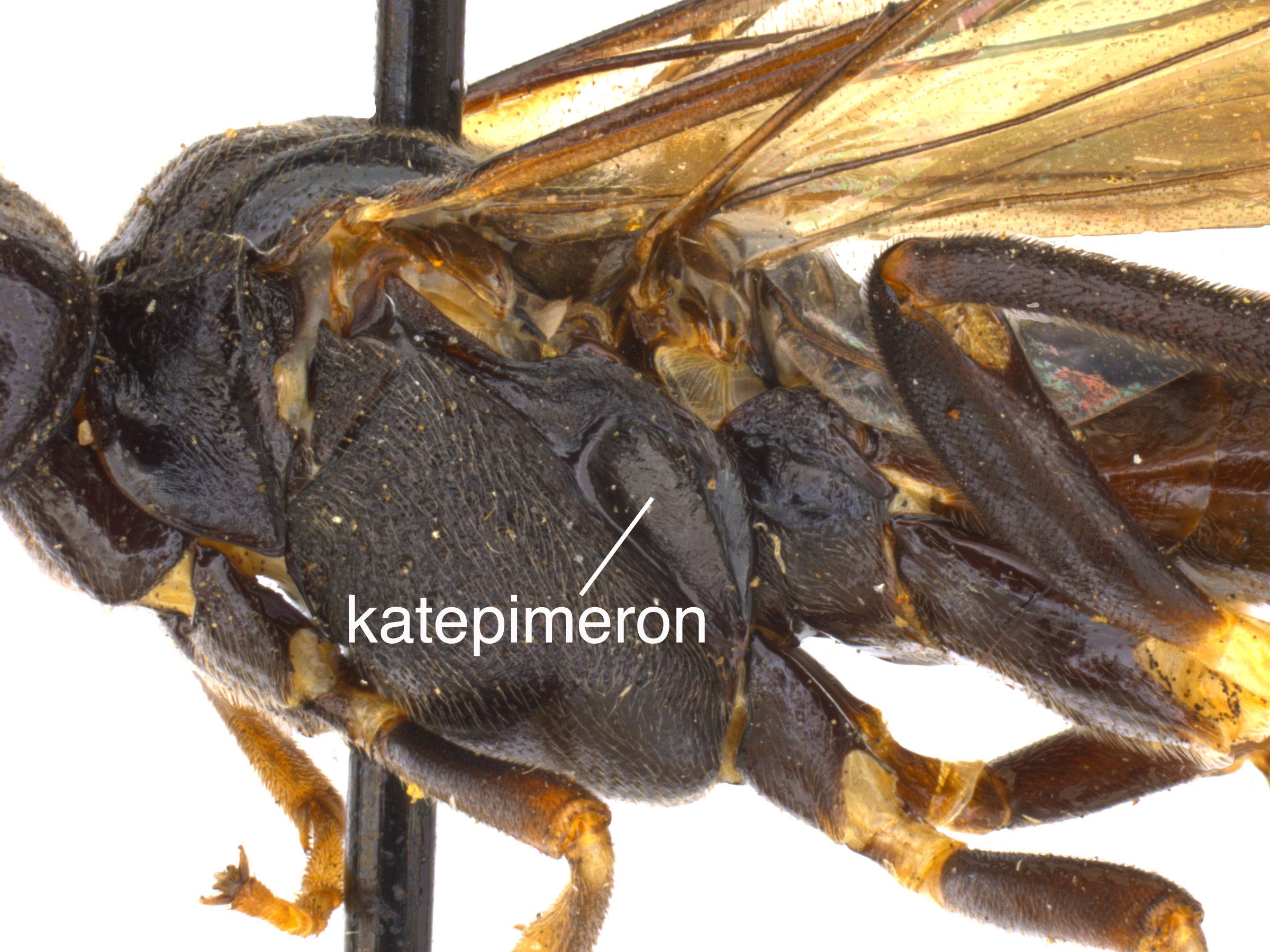 , and from Claremontia by the relative length of the third and fourth antennal segments and the lack of a tarsal clawtarsal claw:
, and from Claremontia by the relative length of the third and fourth antennal segments and the lack of a tarsal clawtarsal claw:
sharpened appendage emerging from the apex of the tarsus
 basalbasal:
basalbasal:
towards the base; closest to the body
lobe (Smith 1969dSmith 1969d:
Smith DR. 1969d. Nearctic Sawflies. I. Blennocampinae: Adults and larvae (Hymenoptera: Tenthredinidae). Technical Bulletin, U.S. Department of Agriculture 1397: 1-176.). Claremontia is also characterized by a postocularpostocular:
describes area behind the compound eye
furrowfurrow:
a groove or linear depression
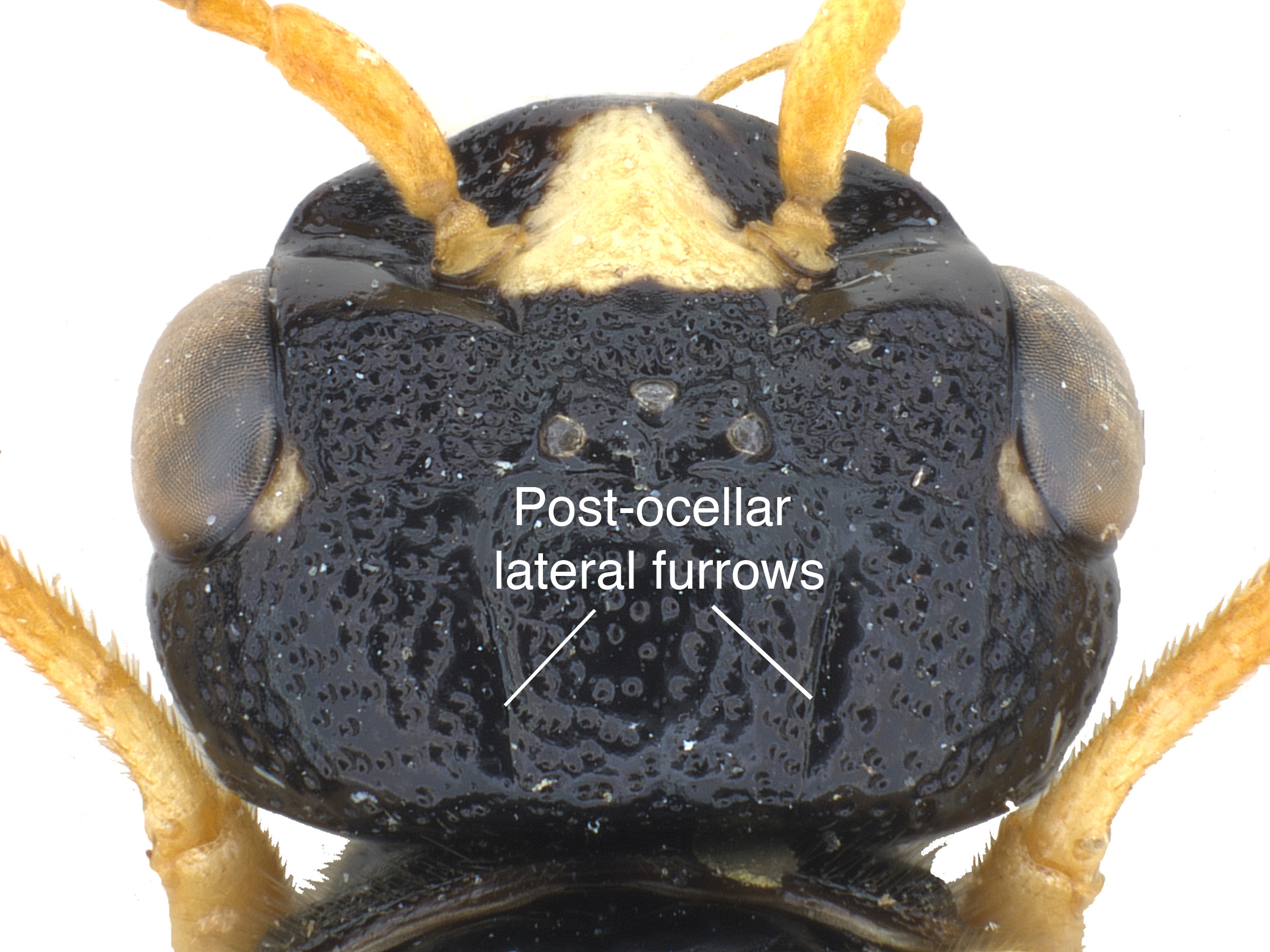 which is not present in Monophadnoides (Smith 2015Smith 2015:
which is not present in Monophadnoides (Smith 2015Smith 2015:
Smith DR. 2015. A new Monophadnoides Ashmead (Hymenoptera: Tenthredinidae) from Eastern North America and notes on other species. Proceedings of the Entomological Society of Washington 117(4): 499-507.).
none
In North America, Monophadnoides feeds on Rubus (cane berry) (Goulet 1992Goulet 1992:
Goulet H. 1992. The genera and subgenera of the sawflies of Canada and Alaska: Hymenoptera. Symphyta. The insects and arachnids of Canada. Part 20. Agriculture Canada Publication.). Monophadnoides rubi demonstrates a preference for Rubus idaeus (raspberry) (Vaughan and Rosenstiel 1949Vaughan and Rosenstiel 1949:
Vaughan EK and Rosenstiel RG. 1949. Diseases and insect pests of cane fruits in Oregon. Oregon State University Agricultural Experiment Station Bulletin 418.).
Monophadnoides rubi is commonly known as the raspberry sawfly because of its notoriety as a pest on raspberry plants. Females oviposit into the tissue of the leaves. Emerged larvaelarva:
the immature stage of holometabolous insects
 feed on the underside of the leaf, making small round holes. As the larvaelarva:
feed on the underside of the leaf, making small round holes. As the larvaelarva:
the immature stage of holometabolous insects
 mature, they feed on the entire leaf. Larvaelarva:
mature, they feed on the entire leaf. Larvaelarva:
the immature stage of holometabolous insects
 are light green in color with several fleshy spines. At maturity, they fall to the ground and overwinter in the soil (Vaughan and Rosenstiel 1949Vaughan and Rosenstiel 1949:
are light green in color with several fleshy spines. At maturity, they fall to the ground and overwinter in the soil (Vaughan and Rosenstiel 1949Vaughan and Rosenstiel 1949:
Vaughan EK and Rosenstiel RG. 1949. Diseases and insect pests of cane fruits in Oregon. Oregon State University Agricultural Experiment Station Bulletin 418.).
World: This genus is HolarcticHolarctic:
describing the region of the Northern Hemisphere that includes both the Nearctic and Palearctic regions
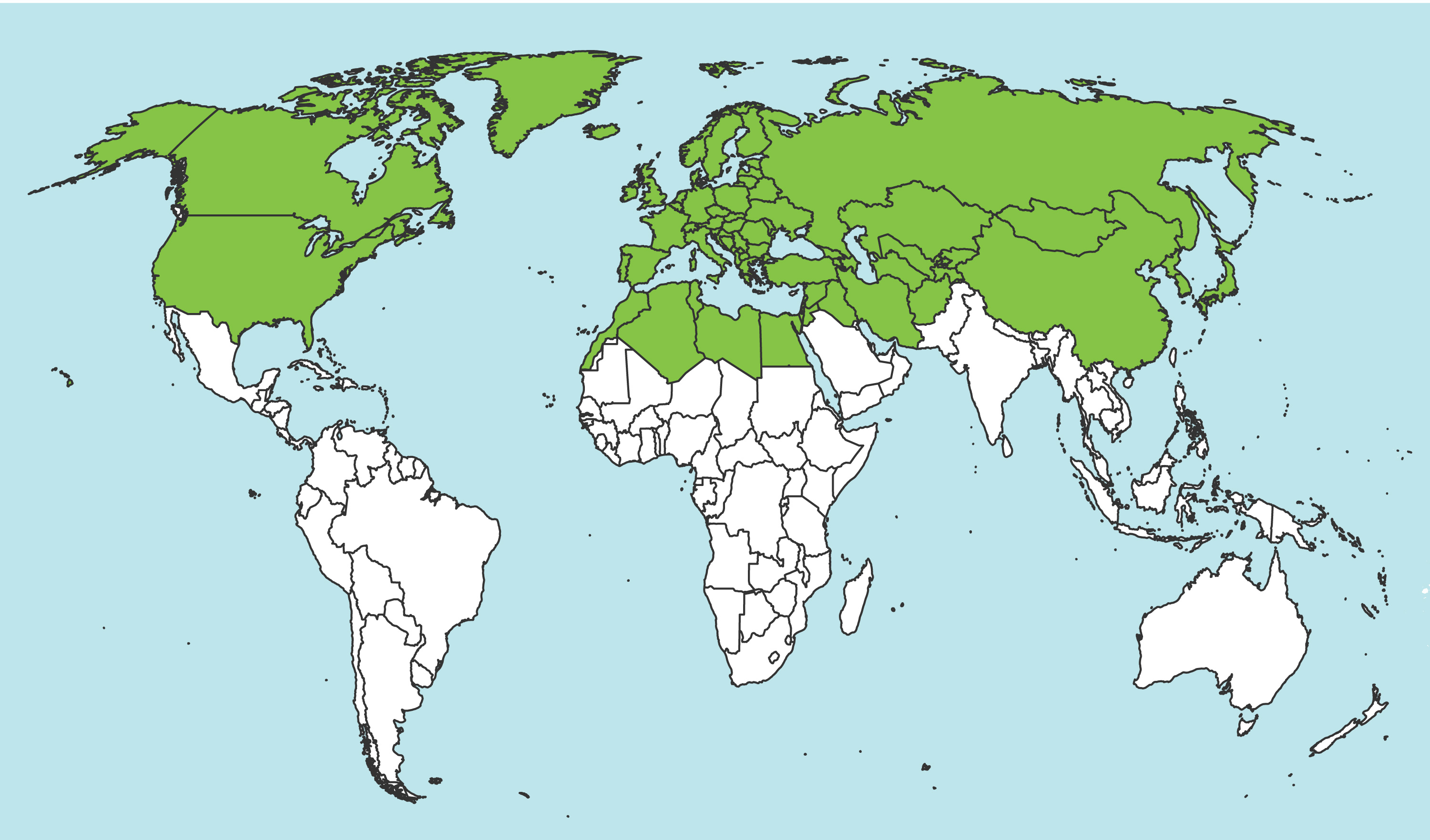 , found in North America, Europe, through Asia to China, Korea, and Japan (Smith and Wei 2015Smith and Wei 2015:
, found in North America, Europe, through Asia to China, Korea, and Japan (Smith and Wei 2015Smith and Wei 2015:
Smith DR and Wei M. 2015. A new Asian Monophadnoides Ashmead (Hymenoptera: Tenthredinidae) with high antennal crests. Proceedings of the Entomological Society of Washington 117 (2): 203-208., Taeger et al. 2018Taeger et al. 2018:
Taeger A, Liston AD, Prous M, Groll EK, Gehroldt T, and Blank SM. 2018. ECatSymmdash;Electronic World Catalog of Symphyta (Insecta, Hymenoptera). Program version 5.0 (19 Dec 2018), data version 40 (23 Sep 2018). Senckenberg Deutsches Entomologisches Institut (SDEI), Muuml;ncheberg. https://sdei.de/ecatsym/ Accessed: 28 Jan 2020.).
North America: Monophadnoides rubi occurs throughout the United States, as far south as Texas and Georgia, and in southern Canada (Smith 1969dSmith 1969d:
Smith DR. 1969d. Nearctic Sawflies. I. Blennocampinae: Adults and larvae (Hymenoptera: Tenthredinidae). Technical Bulletin, U.S. Department of Agriculture 1397: 1-176.).
Map data from: GBIF.org (29 October 2019) GBIF Occurrence Download Monophadnoides
Details about data used for maps can be found here.